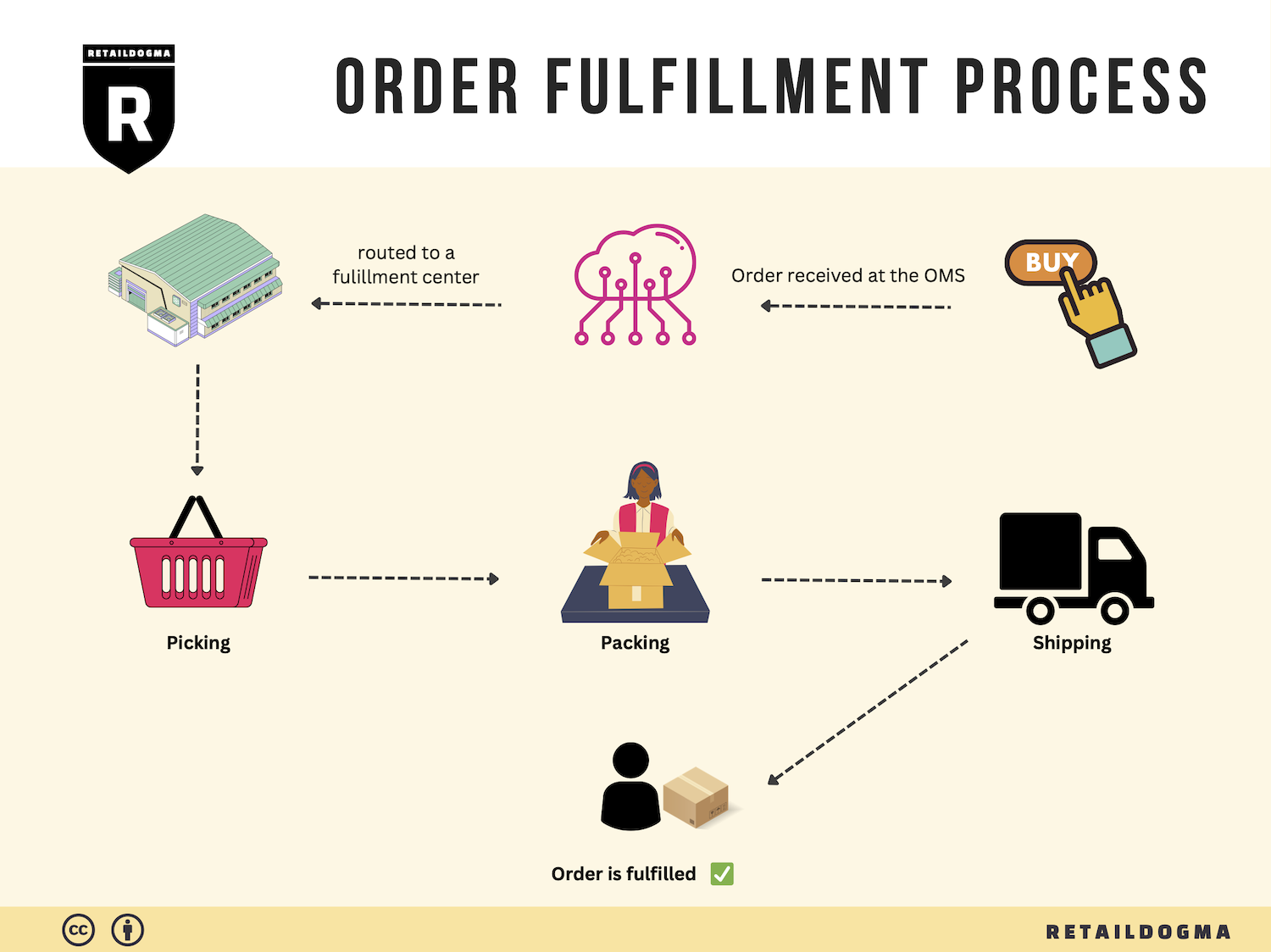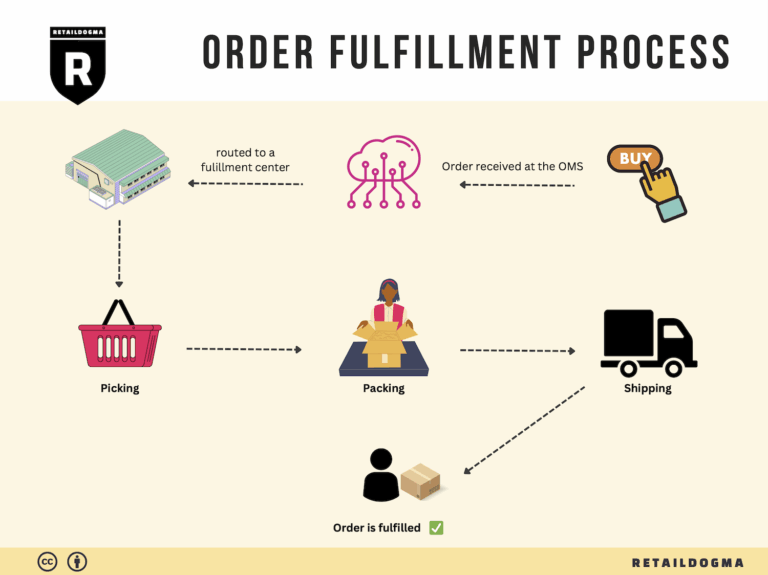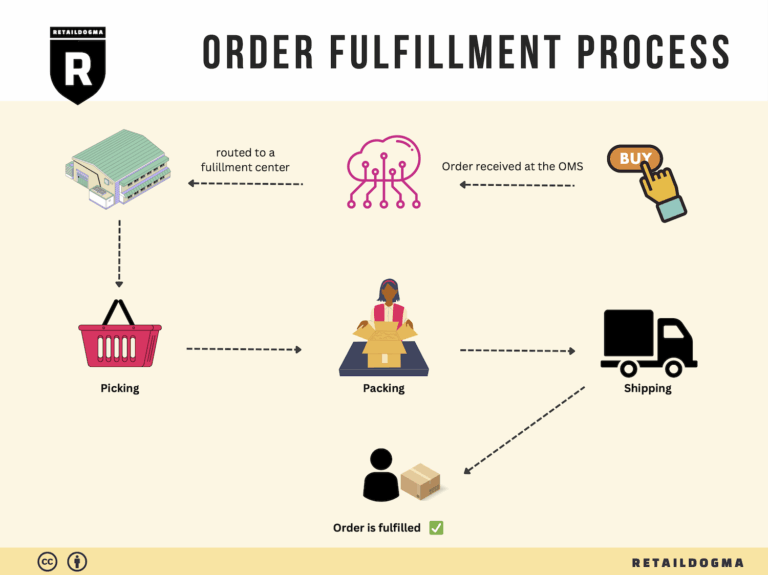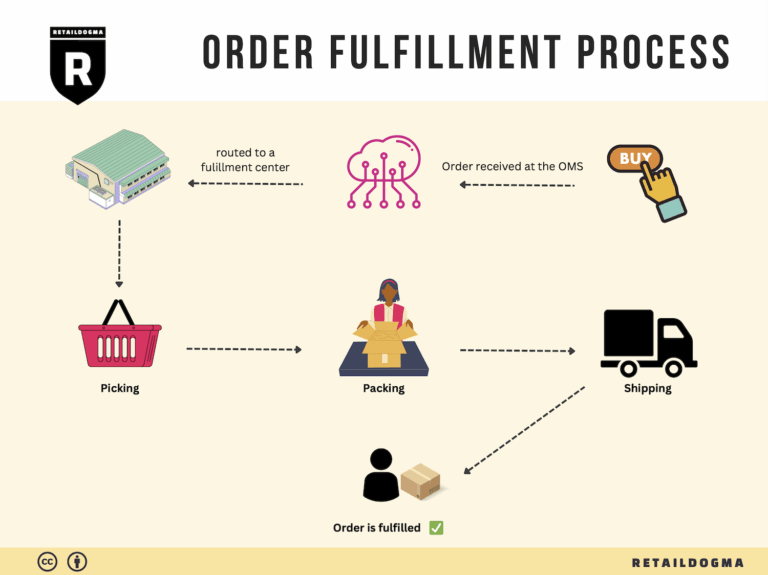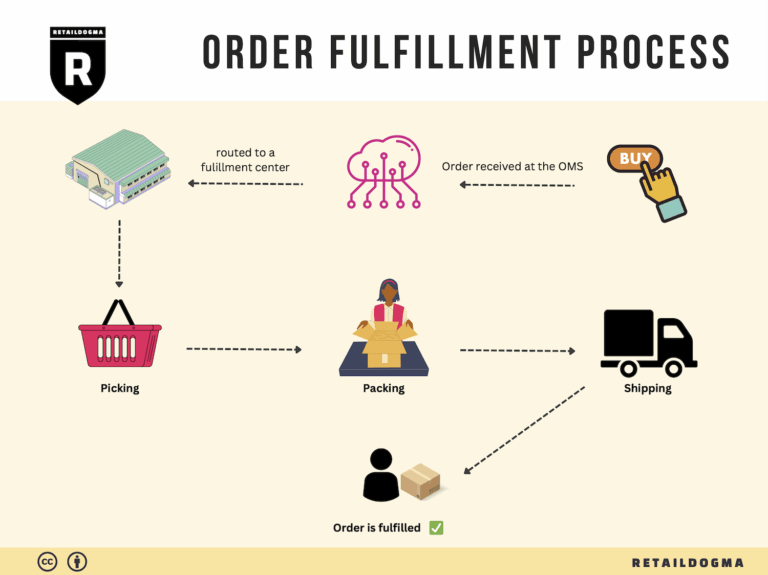How Order Fulfillment Works: A Step-by-Step Guide for Businesses
What is E-commerce Fulfillment? An Introduction for Growing Businesses
Understanding E-commerce Fulfillment: A Key Component for Growth
As an e-commerce business owner, you may have experienced the daunting reality of packing and shipping orders. The excitement of making sales often turns into a whirlwind of logistics, leading to stress and inefficiencies. This is where e-commerce fulfillment comes into play. Simply put, fulfillment is the process of getting a product from your inventory to your customer’s doorstep. It encompasses everything from receiving inventory to packing orders, shipping them, and managing returns. As your business scales, mastering fulfillment becomes crucial to maintaining customer satisfaction and operational efficiency.
In this guide, we will explore the various models of e-commerce fulfillment available to growing businesses. For instance, Third-Party Logistics (3PL) providers can take on the heavy lifting of warehousing and shipping, allowing you to focus on core business activities. Alternatively, Amazon’s Fulfillment by Amazon (FBA) service offers a streamlined approach, where Amazon handles storage, packing, and shipping, leveraging its extensive logistics network.
We will delve into the core services involved in e-commerce fulfillment, including inventory management, order processing, shipping options, and returns handling. Understanding these services can help you identify the specific needs of your business and how different partners can meet those needs.
Choosing the right fulfillment partner is another critical decision. Factors such as reliability, technology integration, and scalability should guide your selection process. We’ll provide insights into what to look for in a fulfillment partner to ensure they align with your business goals and customer expectations.
Pricing is often a concern for growing e-commerce businesses. We will cover the various cost structures associated with different fulfillment models, enabling you to make informed financial decisions. Understanding the pricing landscape will help you evaluate the return on investment for your chosen fulfillment strategy.
Ultimately, the goal of this guide is to empower you to make smart decisions about your logistics. By understanding e-commerce fulfillment, you can enhance your operational efficiency, improve customer satisfaction, and position your business for sustainable growth. Whether you are just starting out or are looking to scale, mastering fulfillment is essential to your success in the competitive e-commerce landscape.
What You’ll Learn In This Guide
- What is E-commerce Fulfillment? An Introduction for Growing Businesses
- The Order Fulfillment Process: From ‘Buy’ Button to Customer’s Door
- Comparing Fulfillment Models: In-House vs. 3PL vs. Dropshipping
- A Deep Dive into Amazon FBA: Pros, Cons, and Who It’s For
- Core Services Offered by Fulfillment Centers
- How to Choose a Fulfillment Partner: A 6-Point Checklist
- Understanding Fulfillment Pricing: A Breakdown of Common Fees
- Frequently Asked Questions (FAQs) about Fulfillment
- Conclusion: Is Outsourcing Fulfillment the Right Move for Your Business?
- Important Disclaimer
The Order Fulfillment Process: From ‘Buy’ Button to Customer’s Door
1. Receiving Inventory
The first step in the order fulfillment process is receiving inventory. When products arrive at the fulfillment center, they are checked against purchase orders to ensure accuracy and quality. This step is crucial because it sets the foundation for the entire fulfillment process. Discrepancies in inventory can lead to stockouts or overstock situations, impacting sales and customer satisfaction.
During this phase, each product is assigned a Stock Keeping Unit (SKU), a unique identifier that helps track inventory throughout the fulfillment process. This ensures that every item is accounted for and can be easily located within the warehouse. Proper receiving protocols not only minimize errors but also streamline the subsequent steps in the fulfillment chain, enabling e-commerce businesses to maintain a robust inventory management system.
2. Warehouse Storage
After receiving the inventory, the next step is warehouse storage. Proper storage is essential for efficient order fulfillment, as it directly affects picking speed and accuracy. Products are organized based on various strategies, such as by product type, size, or demand frequency. This organization is often facilitated by using location codes, which correspond to specific areas in the warehouse.
Effective warehouse storage maximizes space utilization and minimizes the time workers spend locating items. For example, fast-moving items might be stored closer to the packing area to expedite the picking process. Additionally, implementing a systematic storage solution, such as a first-in-first-out (FIFO) method, ensures that older stock is sold before newer stock, reducing the risk of obsolescence.
3. Order Picking
Order picking is the process of selecting items from storage to fulfill customer orders. This step is vital as it directly influences order accuracy and customer satisfaction. A well-organized picking process can significantly reduce the time taken to gather products, which is essential for meeting delivery timelines.
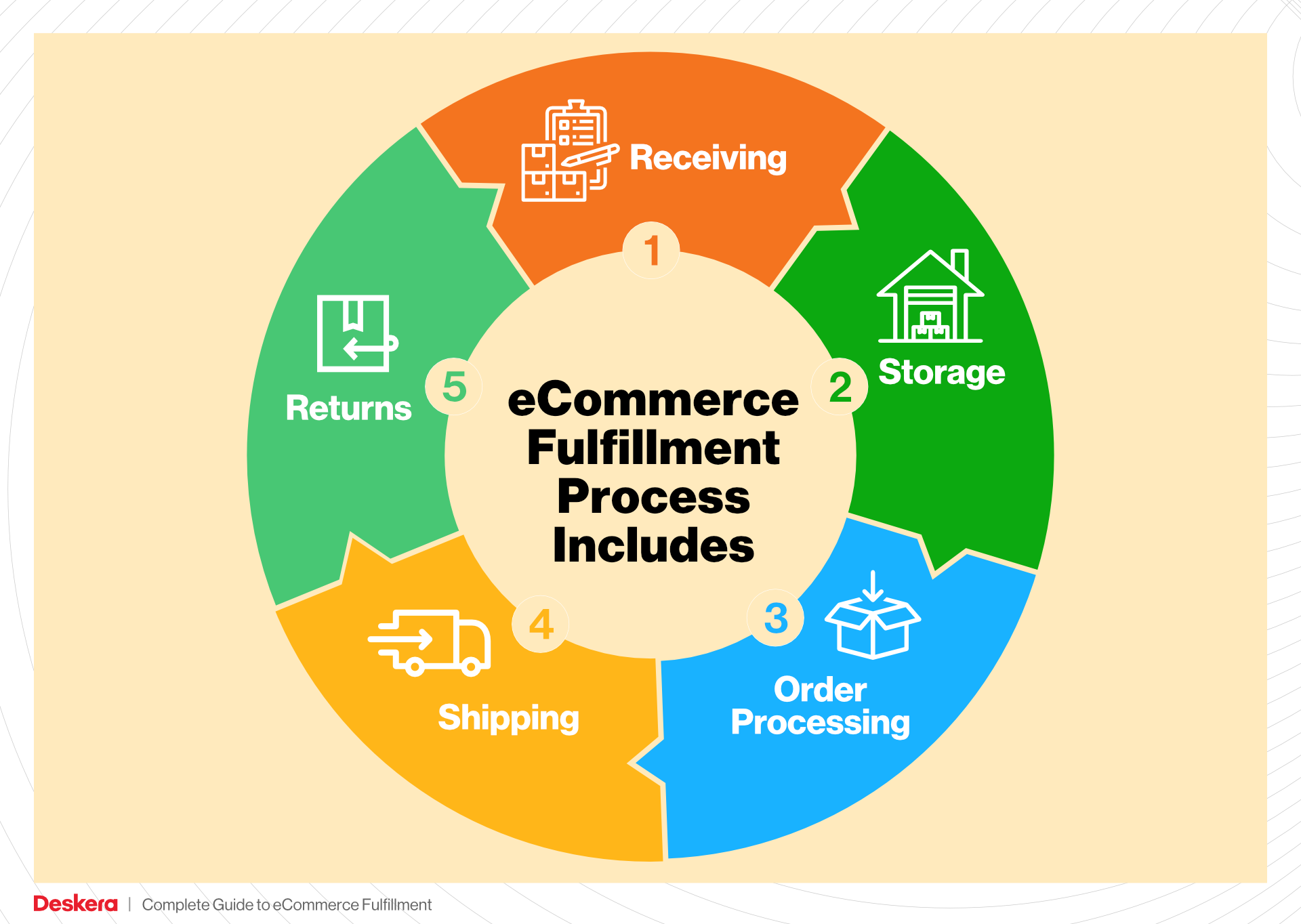
Pick lists, which are generated based on customer orders, guide warehouse staff in collecting the correct items. Various picking methods can be employed, such as batch picking, where multiple orders are picked simultaneously, or zone picking, where pickers are assigned specific areas of the warehouse. The choice of picking method depends on the business’s order volume and product variety. By optimizing the picking process, e-commerce businesses can enhance operational efficiency and maintain customer loyalty.
4. Order Packing
Once the items have been picked, they move to the packing stage. This step involves securely packaging products to ensure they arrive at the customer’s door in perfect condition. Effective packing is crucial not only for protecting the items during transit but also for enhancing the unboxing experience, which can positively influence customer perceptions of the brand.
During packing, it’s important to use the right materials, such as boxes, bubble wrap, and packing tape, to prevent damage. Additionally, packing slips and return labels are typically included to facilitate easy returns if necessary. Businesses should also consider sustainability in their packing choices, as eco-friendly packaging can appeal to environmentally conscious consumers. A well-executed packing process contributes to overall customer satisfaction and can even reduce return rates.
5. Shipping & Delivery
The final step in the order fulfillment process is shipping and delivery. Once packages are packed, they are labeled and prepared for shipment. This stage is critical as it determines how quickly customers receive their orders. Efficient shipping logistics can differentiate a business in the competitive e-commerce landscape.
Shipping options may include standard, expedited, or same-day delivery, depending on customer preferences and business capabilities. Partnering with reliable carriers and utilizing shipping software can streamline this process, allowing businesses to track shipments and manage delivery times effectively. Additionally, providing customers with tracking information enhances their experience by keeping them informed about their order status. A well-managed shipping and delivery process is essential for maintaining high levels of customer satisfaction and encouraging repeat purchases.
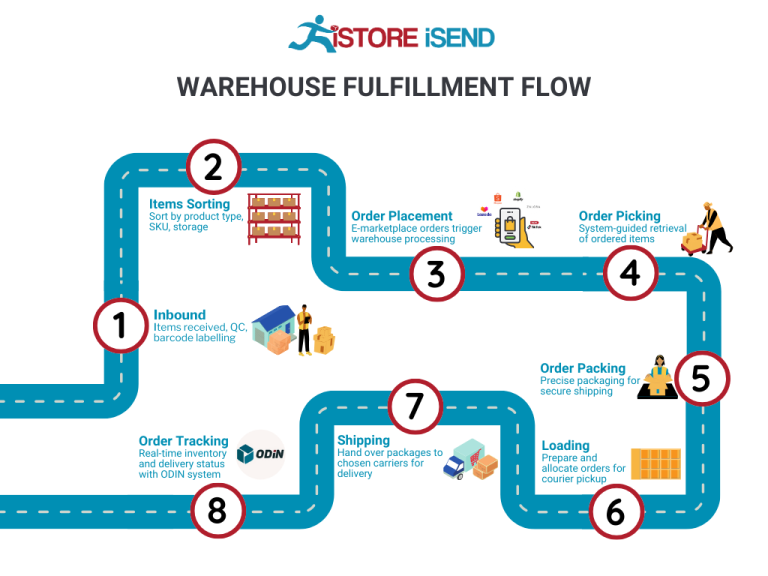
In conclusion, understanding and optimizing each step of the order fulfillment process—from receiving inventory to shipping and delivery—can significantly enhance operational efficiency and customer satisfaction for e-commerce businesses. By implementing best practices and leveraging technology, businesses can scale their operations effectively while meeting customer expectations.
Comparing Fulfillment Models: In-House vs. 3PL vs. Dropshipping
Fulfillment Model Comparison
| Model | Who Handles Inventory | Best For (Business Stage) | Key Advantage | Key Disadvantage |
|---|---|---|---|---|
| In-House Fulfillment | The business itself | Established businesses | Full control over inventory and operations | High overhead costs and resource-intensive |
| Third-Party Logistics (3PL) | A third-party logistics provider | Growing businesses | Scalability and access to expertise | Less control over inventory and potential costs |
| Dropshipping | Supplier or manufacturer | Startups and small businesses | Low upfront costs and no inventory management | Lower profit margins and dependency on suppliers |
In-House Fulfillment
In-house fulfillment involves managing the entire logistics process within your own business. This model is typically suited for established businesses that have the resources to invest in warehousing, staffing, and technology. One of the primary advantages of in-house fulfillment is the control it offers; businesses can oversee inventory levels, order processing, and shipping procedures, ensuring that everything aligns with their specific standards and customer expectations. This model allows for personalized customer service and faster response times, as all operations are conducted internally. However, the key disadvantage is the significant overhead costs associated with maintaining a warehouse, hiring staff, and managing logistics. Businesses must also be prepared to handle fluctuations in demand, which can lead to inefficiencies if inventory management isn’t optimized.
Third-Party Logistics (3PL)
Third-party logistics (3PL) involves outsourcing logistics functions to a specialized provider. This model is ideal for growing businesses that need to scale operations without investing heavily in infrastructure. 3PL providers offer a range of services, including warehousing, order fulfillment, and shipping, allowing businesses to focus on core competencies such as marketing and product development. The scalability of 3PL services is a significant advantage; as your business grows, a 3PL can quickly adjust to increased order volumes without the need for additional investment in physical space or personnel. However, outsourcing logistics means relinquishing some control over inventory and fulfillment processes, which can lead to challenges in maintaining brand standards. Additionally, costs can vary widely based on the services required, potentially leading to unexpected expenses.
Dropshipping
Dropshipping is a fulfillment model where the retailer does not hold inventory but instead relies on suppliers to ship products directly to customers. This approach is particularly attractive for startups and small businesses due to its low upfront costs and minimal financial risk. With dropshipping, businesses can offer a wide range of products without the need for significant capital investment in inventory. The absence of warehousing and logistics management allows entrepreneurs to focus on marketing and customer engagement. However, dropshipping comes with its own set of challenges. Profit margins tend to be lower compared to other fulfillment models, as the retailer often pays a premium for the convenience of not handling the product directly. Furthermore, businesses are reliant on suppliers for inventory management and shipping, which can lead to issues with stock availability and shipping times, potentially affecting customer satisfaction.
Each fulfillment model presents unique advantages and disadvantages, and the right choice depends on your business’s current stage, resources, and long-term goals. Understanding these differences can help you make informed decisions as you scale your e-commerce operations.
A Deep Dive into Amazon FBA: Pros, Cons, and Who It’s For
Understanding Fulfillment by Amazon (FBA)
Fulfillment by Amazon (FBA) is a service offered by Amazon that allows sellers to store their products in Amazon’s fulfillment centers. Amazon then takes care of storage, packaging, and shipping of these products directly to customers. This service simplifies the logistics of e-commerce, enabling sellers to focus on growing their business rather than managing the complexities of order fulfillment.
When a customer places an order for a product listed on Amazon, Amazon handles the entire process from picking the product off the shelf to packaging it and shipping it out. Additionally, FBA products are eligible for Amazon Prime, which can significantly increase their visibility and sales potential.
How FBA Works
-
Setting Up Your FBA Account: Sellers must first create an Amazon seller account and opt for FBA. This includes setting up product listings and determining which items to send to Amazon’s warehouses.
-
Sending Inventory to Amazon: Once products are ready, sellers ship their inventory to designated Amazon fulfillment centers. Amazon provides guidance on how to prepare and label products for shipment.
-
Storage and Management: Amazon stores the products in its fulfillment centers. Sellers can monitor their inventory levels and performance through the Amazon Seller Central dashboard.
-
Order Processing: When a customer orders a product, Amazon picks, packs, and ships it on behalf of the seller. They also handle customer service and returns for these orders.
-
Payment: After the product is sold, Amazon deducts applicable fees and transfers the remaining revenue to the seller’s account, typically on a biweekly basis.
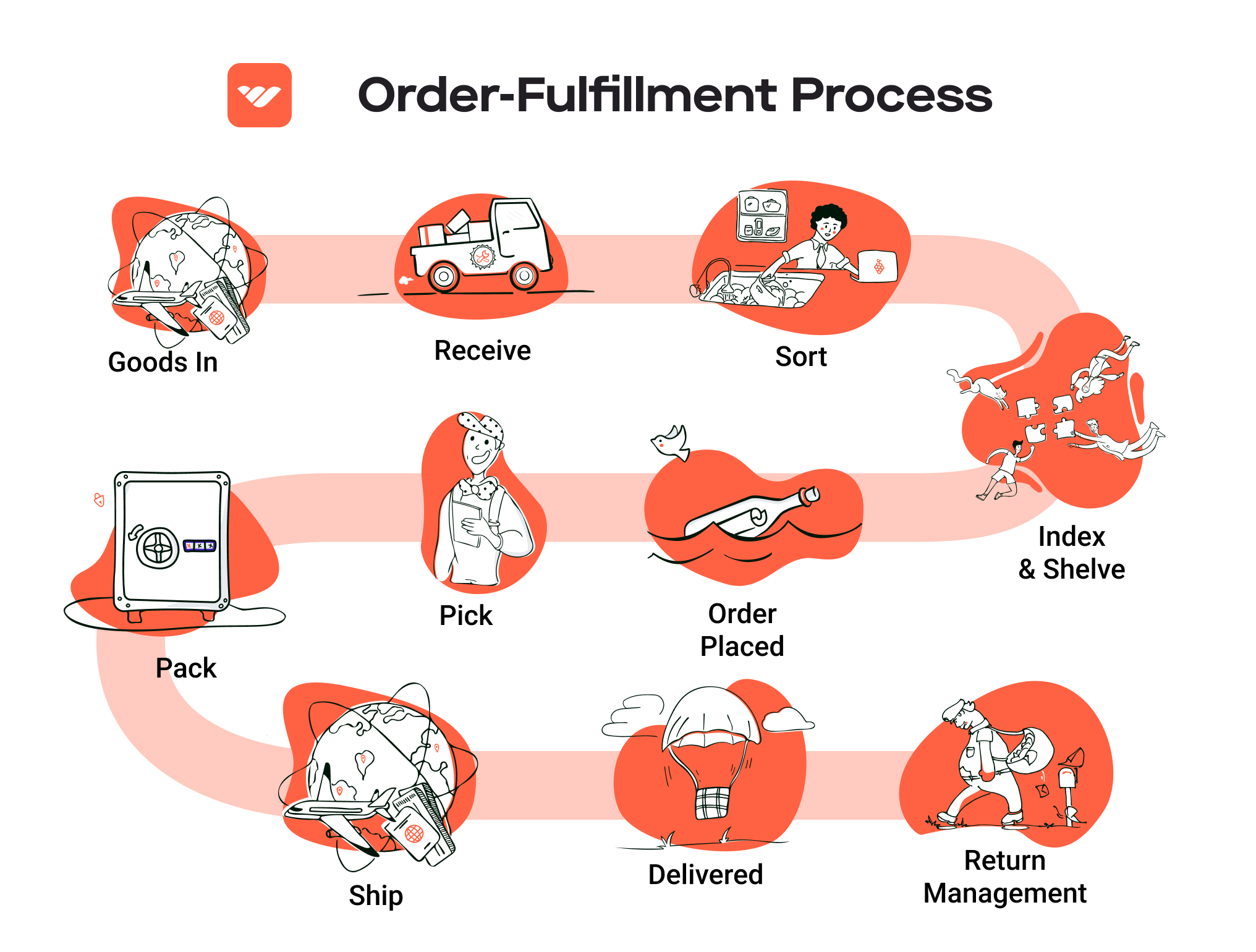
Pros of Using FBA
-
Prime Eligibility: Products fulfilled by Amazon are eligible for Amazon Prime, which can enhance visibility and attract more customers. Prime members tend to spend more on average and expect fast, free shipping.
-
Customer Trust: Leveraging Amazon’s brand can increase customer confidence. Many buyers prefer products that are fulfilled by Amazon due to the perceived reliability of Amazon’s shipping and customer service.
-
Multi-channel Fulfillment: FBA can be utilized for orders from other sales channels, such as a seller’s own website or other e-commerce platforms. This centralizes inventory and simplifies logistics.
-
Scalability: FBA allows sellers to scale their business without the need to invest in their own warehousing or logistics infrastructure. As sales grow, sellers can easily send more inventory to Amazon.
-
Time Savings: By outsourcing fulfillment, sellers can focus on other critical aspects of their business, such as product development and marketing, rather than spending time on shipping and logistics.
Cons of Using FBA
-
High Fees: FBA comes with various fees, including storage fees for holding inventory and fulfillment fees for picking, packing, and shipping orders. These costs can add up, especially for low-margin products.
-
Strict Inventory Rules: Amazon imposes specific requirements on inventory management, including limits on the number of units that can be stored in fulfillment centers and guidelines for product labeling. Non-compliance can lead to penalties or removal from the program.
-
Commingling Risks: FBA allows for commingling inventory, meaning that a seller’s products may be mixed with those from other sellers in the warehouse. This can lead to issues such as receiving returns of damaged or unsold items that are not your own.
-
Loss of Control: By using FBA, sellers relinquish some control over the fulfillment process. This includes aspects like packaging and branding, which may not align with the seller’s brand image.
-
Potential for Inventory Strains: Sellers may face challenges in managing inventory levels effectively. Overestimating demand can lead to increased storage fees, while underestimating can result in stockouts and lost sales.
Who is FBA Best For?
Fulfillment by Amazon is particularly well-suited for:
-
Small to Medium-Sized Businesses: Businesses looking to scale their operations without the burden of managing logistics can benefit significantly from FBA.
-
E-commerce Entrepreneurs: New sellers who want to leverage Amazon’s vast customer base and infrastructure can find FBA an attractive option to jumpstart their sales.
-
Product-Based Businesses: Brands with physical products that require storage, shipping, and customer service can streamline their operations through FBA.
-
Seasonal Sellers: Businesses that experience fluctuating sales patterns can benefit from the ability to send inventory to Amazon on an as-needed basis without the overhead of maintaining their own storage facilities.
-
Multi-Channel Sellers: Sellers who operate on multiple platforms can efficiently manage their inventory and fulfill orders through a centralized system, using FBA to fulfill sales from their own website or other marketplaces.
In conclusion, Fulfillment by Amazon offers a powerful tool for e-commerce businesses looking to simplify their logistics and expand their reach. However, it is essential to weigh the pros and cons carefully and determine whether the service aligns with your business goals and operational needs. By understanding how FBA works and who it serves best, sellers can make informed decisions that facilitate growth and enhance their market presence.
Core Services Offered by Fulfillment Centers
Inventory Management & Warehousing
Inventory management and warehousing form the backbone of efficient fulfillment operations. Fulfillment centers provide dedicated storage space for a variety of products, allowing e-commerce businesses to maintain optimal stock levels without the burden of managing their own warehouses. This service involves not only the physical storage of goods but also the meticulous tracking of inventory levels through sophisticated software systems.
Benefits:
-
Space Optimization: By utilizing a fulfillment center, businesses can avoid the costs associated with leasing or owning large warehouse spaces. This is especially beneficial for startups or small businesses that may not have the capital to invest in real estate.
-
Real-Time Tracking: Modern fulfillment centers employ advanced inventory management systems that offer real-time tracking of stock levels. This enables businesses to maintain accurate inventory counts, reducing the risk of stockouts or overstock situations.
-
Scalability: As businesses grow, fulfillment centers can easily accommodate increased inventory levels without the need for significant infrastructure changes. This flexibility allows businesses to scale operations smoothly in response to market demands.
-
Reduced Labor Costs: Managing inventory in-house often requires hiring additional staff, which adds to operational costs. By outsourcing to a fulfillment center, businesses can reduce labor expenses while still ensuring that their inventory is managed effectively.
Pick and Pack Services
Pick and pack services refer to the process of selecting items from inventory and preparing them for shipment. Fulfillment centers streamline this process by utilizing efficient workflows and technology, such as barcode scanning and automated systems, to ensure accuracy and speed in order fulfillment.
Benefits:
-
Speed and Efficiency: Fulfillment centers are designed for high-volume order processing. They can quickly pick and pack items, ensuring that orders are shipped promptly, which is crucial for customer satisfaction and retention.
-
Accuracy: With trained staff and advanced technology, fulfillment centers significantly reduce the risk of errors in order fulfillment. Accurate order processing minimizes returns and boosts customer trust in the business.
-
Customization: Many fulfillment centers offer customizable packing options, including branded packing materials or specific packing requirements. This allows e-commerce businesses to enhance their branding and create a better unboxing experience for customers.
-
Cost-Effectiveness: By leveraging the economies of scale that fulfillment centers provide, businesses can reduce shipping costs. Fulfillment centers often negotiate better rates with carriers due to their shipping volume, which can be passed on to the e-commerce businesses.
Kitting and Assembly
Kitting and assembly services involve grouping individual items together to create a complete product or package. This could include assembling products from multiple components or creating bundles of items that are sold together. Fulfillment centers can manage these processes, allowing businesses to offer more complex products without the need for in-house labor.
Benefits:
-
Streamlined Production: Kitting and assembly services help businesses streamline their production processes. By outsourcing these tasks, businesses can focus on core competencies such as marketing and sales while leaving assembly tasks to experts.
-
Enhanced Product Offerings: Businesses can create unique product bundles or kits that appeal to customers, potentially increasing average order value. This capability allows for greater creativity in product offerings without overwhelming internal resources.
-
Quality Control: Fulfillment centers often have established quality control processes in place to ensure that assembled products meet certain standards. This reduces the likelihood of defects and enhances customer satisfaction.
-
Flexibility and Responsiveness: As market trends change, businesses can quickly adapt their product offerings by utilizing kitting and assembly services. This agility allows them to respond to customer preferences without long lead times.
Returns Management (Reverse Logistics)
Returns management, or reverse logistics, is a crucial aspect of e-commerce fulfillment that involves handling product returns efficiently. Fulfillment centers streamline the returns process, enabling businesses to manage returned items effectively and reintegrate them into inventory when appropriate.
Benefits:
-
Customer Satisfaction: A smooth returns process is essential for maintaining customer loyalty. Fulfillment centers often provide hassle-free returns management, which can enhance the overall customer experience and encourage repeat business.
-
Cost Reduction: Efficient returns processing minimizes the costs associated with handling returns. Fulfillment centers can quickly assess returned items and determine whether they can be restocked, repaired, or disposed of, thereby optimizing inventory management.
-
Data Insights: By analyzing returns data, businesses can gain valuable insights into product performance and customer preferences. This information can inform future product development and marketing strategies.
-
Resource Efficiency: Managing returns in-house can be labor-intensive and time-consuming. By outsourcing this function to a fulfillment center, businesses can free up internal resources to focus on growth and customer engagement rather than logistics challenges.
In conclusion, partnering with a fulfillment center offers a range of core services that can significantly enhance an e-commerce business’s operational efficiency, customer satisfaction, and overall scalability. By leveraging these services, business owners can focus on growth while ensuring that their logistics processes are handled by experts.
How to Choose a Fulfillment Partner: A 6-Point Checklist
Location & Warehouse Network
Importance:
The geographical location of your fulfillment partner’s warehouses can significantly impact shipping times, costs, and overall customer satisfaction. A partner with strategically located warehouses can help reduce transit times and shipping expenses, especially if your customer base is spread out across different regions.
Questions to Ask:
– Where are your warehouses located, and how do they align with my target markets?
– Do you have a network of fulfillment centers that can support my shipping needs?
– How do you handle shipping to international customers?
– Can you provide a map of your warehouse locations and their respective service areas?
Technology & Integrations
Importance:
In today’s e-commerce landscape, technology plays a crucial role in efficient order fulfillment. A fulfillment partner should utilize advanced technology to manage inventory, track shipments, and integrate seamlessly with your existing e-commerce platforms. This ensures real-time visibility and minimizes errors.
Questions to Ask:
– What technology do you use for inventory management and order processing?
– Are your systems compatible with major e-commerce platforms (e.g., Shopify, Amazon, WooCommerce)?
– Can you provide real-time tracking for shipments?
– How do you handle data security and protect customer information?
Specializations (e.g., cold storage, oversized items)
Importance:
Depending on your product offerings, you may need a fulfillment partner with specific capabilities. For instance, if you sell perishable goods, you’ll require a partner with cold storage facilities. Similarly, oversized or bulky items may need specialized handling and storage.
Questions to Ask:
– Do you have specialized facilities for handling specific types of products (e.g., food, fragile items, oversized goods)?
– What certifications do you hold that are relevant to my product type (e.g., FDA for food storage)?
– How do you ensure the quality and safety of specialized items during storage and shipping?
– Can you accommodate seasonal fluctuations in inventory or order volume?
Scalability & Capacity
Importance:
As your business grows, your fulfillment needs will evolve. It’s vital to choose a partner who can scale with your operations without sacrificing service quality. Understanding their capacity to handle increased volumes will help prevent bottlenecks during peak seasons.
Questions to Ask:
– What is your maximum fulfillment capacity, and how do you manage peak seasons?
– Can you scale operations quickly if my order volume increases?
– How do you handle seasonal fluctuations in inventory?
– What contingency plans do you have in place for unexpected surges in demand?
Pricing and Contracts
Importance:
Understanding the pricing structure and contractual obligations is crucial for maintaining profitability. A transparent pricing model helps you avoid unexpected costs, while a flexible contract can adapt to your business’s changing needs.
Questions to Ask:
– Can you provide a detailed breakdown of your pricing model (e.g., storage fees, pick-and-pack fees, shipping costs)?
– Are there any hidden fees I should be aware of?
– What is the length of the contract, and what are the terms for cancellation or changes?
– How do you handle price increases, and will I be notified in advance?
Customer Support & Reviews
Importance:
Reliable customer support is essential when issues arise, whether it’s a shipping error or inventory management problem. Partnering with a fulfillment provider that prioritizes customer service will ensure that your business runs smoothly and that you can resolve issues quickly.
Questions to Ask:
– What customer support channels do you offer (e.g., phone, email, chat)?
– What are your average response times for customer inquiries?
– Can you provide references or case studies from similar businesses?
– How do you handle complaints or disputes with clients?
Conclusion
Choosing the right fulfillment partner is a critical decision that can influence your e-commerce business’s success. By following this checklist and asking the right questions, you can ensure that your chosen partner aligns with your operational needs and growth objectives. The right partner will not only enhance your logistics but also contribute to your overall customer satisfaction and business scalability.
Understanding Fulfillment Pricing: A Breakdown of Common Fees
Initial Setup Fees
Initial setup fees are typically charged by fulfillment centers to onboard your business. These fees can vary widely depending on the complexity of your inventory and the services required. Common elements included in initial setup fees are account creation, integration with your e-commerce platform, and initial training sessions for your team.
The calculation of initial setup fees usually encompasses a one-time charge based on the services rendered during the onboarding process. For instance, if a fulfillment center requires custom software integration or specialized training, these factors can significantly increase initial fees. It’s important to clarify what services are included in this fee to avoid unexpected costs.
Receiving Fees
Receiving fees are charged when your inventory arrives at the fulfillment center. This fee covers the labor costs associated with unloading, inspecting, and entering your products into the inventory management system.
Typically, receiving fees are calculated per pallet or per item received. For example, if you send a shipment of 10 pallets, the fulfillment center may charge a fee per pallet, resulting in a total fee based on the number of pallets processed. Be sure to understand whether additional charges apply for items that require special handling or inspection.
Storage Fees (per pallet/bin)
Storage fees are incurred for the space your inventory occupies within the warehouse. These fees can be charged on a per pallet or per bin basis, depending on how your products are stored.
The calculation of storage fees is generally straightforward: you will be charged a monthly fee based on the number of pallets or bins your products occupy. For instance, if you have 5 pallets of products stored in the warehouse, and the storage fee is $20 per pallet per month, your monthly storage cost would be $100. Be aware that some fulfillment centers may have minimum storage fees or tiered pricing based on volume, which can impact your overall costs.
Pick & Pack Fees (per item/order)
Pick and pack fees are charged for the labor involved in retrieving items from storage and packing them for shipment. This fee is crucial for understanding your fulfillment costs, as it directly impacts your bottom line with each order processed.
Pick and pack fees are typically calculated on a per item or per order basis. For instance, if a fulfillment center charges $2.00 per item for picking and packing, and an order consists of 3 items, the total fee for that order would be $6.00. Some fulfillment centers may offer tiered pricing, where the fee per item decreases as order volume increases. It’s essential to discuss your order volume projections with your fulfillment partner to find the best pricing structure for your business.
Shipping Fees
Shipping fees encompass the costs associated with delivering your products to customers. These fees can vary significantly based on factors such as package dimensions, weight, destination, and the shipping method selected (standard, expedited, etc.).
Shipping fees are generally calculated using a combination of weight and distance. Fulfillment centers often use shipping carriers like UPS, FedEx, or USPS, which have their own pricing structures. As a business owner, you’ll want to ensure that you understand how these fees are calculated and whether your fulfillment center can offer discounted shipping rates based on your volume. Some fulfillment centers include shipping fees in their overall pricing, while others bill them separately, so clarify this upfront to avoid surprises.
Tips for Getting an Accurate Quote
-
Be Transparent About Your Needs: Provide detailed information about your inventory, order volume, and any special handling requirements. This will help fulfillment centers give you a more accurate quote.
-
Ask About All Fees: Ensure you inquire about all potential fees, including hidden costs that may not be immediately apparent, such as long-term storage fees or additional handling charges.
-
Review Pricing Structures: Compare different fulfillment centers’ pricing models to find one that aligns with your business needs. Look for centers that offer tiered pricing or discounts for high-volume orders.
-
Consider Seasonal Fluctuations: If your business experiences seasonal peaks, discuss how fulfillment centers handle these fluctuations in pricing and capacity.
-
Negotiate Terms: Don’t hesitate to negotiate terms with potential fulfillment partners. Some may be willing to adjust their pricing based on your projected order volume or length of contract.
By understanding these common fulfillment pricing models and how they are calculated, you can make informed decisions that will help your e-commerce business scale efficiently while managing costs effectively.
Frequently Asked Questions (FAQs) about Fulfillment
1. What is the Amazon Fulfillment Center Warehouse SNC3?
The Amazon Fulfillment Center Warehouse SNC3 is a large-scale logistics facility located at 125 National Way, Durham, NC 27703. It operates 24 hours a day, seven days a week, and is designed to handle the storage, packaging, and shipping of products sold on Amazon. This facility plays a crucial role in Amazon’s supply chain, enabling fast delivery to customers.
2. What are the operating hours of the SNC3 fulfillment center?
The SNC3 fulfillment center operates continuously, 24 hours a day, seven days a week. This round-the-clock service ensures that orders can be processed and shipped at any time, supporting Amazon’s commitment to quick delivery times.
3. What is the difference between a warehouse and a fulfillment center?
A warehouse is primarily a storage facility for goods, where products are stored until needed. In contrast, a fulfillment center not only stores products but also handles the picking, packing, and shipping of those items directly to customers. Fulfillment centers are designed for e-commerce operations, focusing on speed and efficiency in order processing.
4. What is a 3PL (Third-Party Logistics)?
A 3PL is a service provider that offers logistics services to businesses, which can include warehousing, transportation, inventory management, and order fulfillment. Companies often partner with 3PLs to outsource these logistics functions, allowing them to focus on core business activities while benefiting from the expertise and efficiency of the 3PL provider.
5. How much do fulfillment services cost?
The cost of fulfillment services can vary widely depending on several factors, including the volume of orders, the type of products, storage needs, and additional services such as packaging and shipping. On average, businesses can expect to pay a combination of fixed fees (like monthly storage fees) and variable fees based on order volume (like pick-and-pack fees). It’s advisable to request quotes from multiple fulfillment providers to find the best fit for your budget and needs.
6. How does Amazon ensure fast shipping from the SNC3 fulfillment center?
Amazon employs advanced technology and streamlined processes in its fulfillment centers to ensure fast shipping. This includes automated sorting systems, optimized inventory management, and a vast network of delivery options. By using data analytics, Amazon can predict demand and maintain appropriate inventory levels, which helps speed up order processing and delivery times.
7. What types of products can be fulfilled through the SNC3 center?
The SNC3 fulfillment center handles a wide range of products, from electronics and household goods to clothing and health products. However, there may be restrictions on certain items due to safety, regulatory, or logistical concerns. Businesses should consult Amazon’s guidelines for specific product categories.
8. What are the benefits of using Amazon’s fulfillment services?
Using Amazon’s fulfillment services offers several advantages, including access to Amazon’s vast logistics network, faster delivery options, and the ability to scale operations quickly. Additionally, businesses can benefit from Amazon’s customer service and return handling, which enhances the customer experience.
9. Can small businesses use the SNC3 fulfillment center?
Yes, small businesses can utilize the SNC3 fulfillment center as part of Amazon’s Fulfillment by Amazon (FBA) program. This program allows sellers of all sizes to store their products in Amazon’s warehouses, where Amazon takes care of the storage, shipping, and customer service, enabling small businesses to compete with larger retailers.
10. How can I get started with Amazon Fulfillment at the SNC3 center?
To get started with Amazon Fulfillment at the SNC3 center, you need to sign up for an Amazon seller account and enroll in the Fulfillment by Amazon (FBA) program. Once enrolled, you can create product listings, send your inventory to the SNC3 center, and start selling. Amazon provides detailed resources and support to help you navigate the process.
Conclusion: Is Outsourcing Fulfillment the Right Move for Your Business?
Evaluating the Benefits of Outsourcing Fulfillment
Outsourcing your fulfillment can be a transformative decision for your e-commerce business. One of the primary benefits is the significant time savings it offers. By delegating warehousing, picking, packing, and shipping to a specialized fulfillment service, you free up valuable hours that can be redirected towards strategic activities such as marketing, product development, and customer engagement. This shift allows you to focus on scaling your operations rather than getting bogged down in logistics.
Scalability is another crucial advantage. As your sales volume fluctuates, especially during peak seasons or promotional campaigns, a fulfillment partner can adapt to your needs without the overhead costs associated with expanding your own warehouse capabilities. This flexibility not only enhances your ability to respond to market demands but also mitigates risks associated with over-committing resources.
Moreover, partnering with an experienced fulfillment service brings a wealth of expertise. These providers are well-versed in industry best practices, technology integration, and efficient inventory management, enabling you to leverage their knowledge for your benefit. This expertise can lead to improved order accuracy, faster shipping times, and ultimately, higher customer satisfaction.
However, the success of outsourcing fulfillment hinges on selecting the right partner. It’s essential to conduct thorough due diligence, ensuring that your chosen provider aligns with your business goals, values, and customer expectations. A misaligned partnership can lead to operational headaches and negatively impact your brand reputation.
Take Action
To determine if outsourcing fulfillment is the right next step for your business, conduct an audit of your current shipping process. Assess your capacity, costs, and customer feedback to identify areas for improvement. Consider reaching out to potential fulfillment partners to explore how they can support your growth. Making an informed decision today could set the stage for your e-commerce success tomorrow.
Important Disclaimer
⚠️ Important Disclaimer
The information in this guide is for educational purposes. Fulfillment services, pricing, and platform features change frequently. Always conduct your own due diligence and consult with providers directly before making business decisions.
